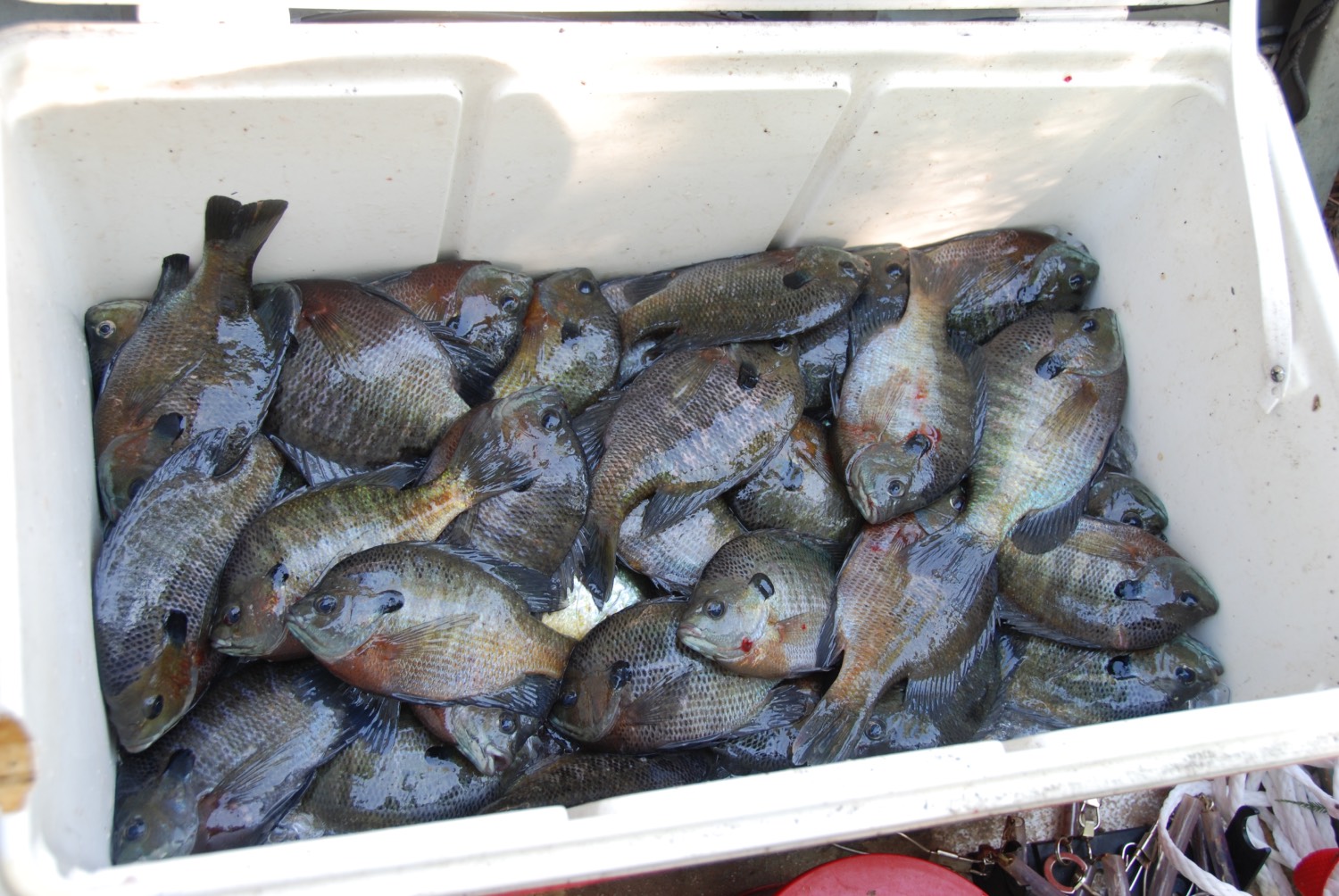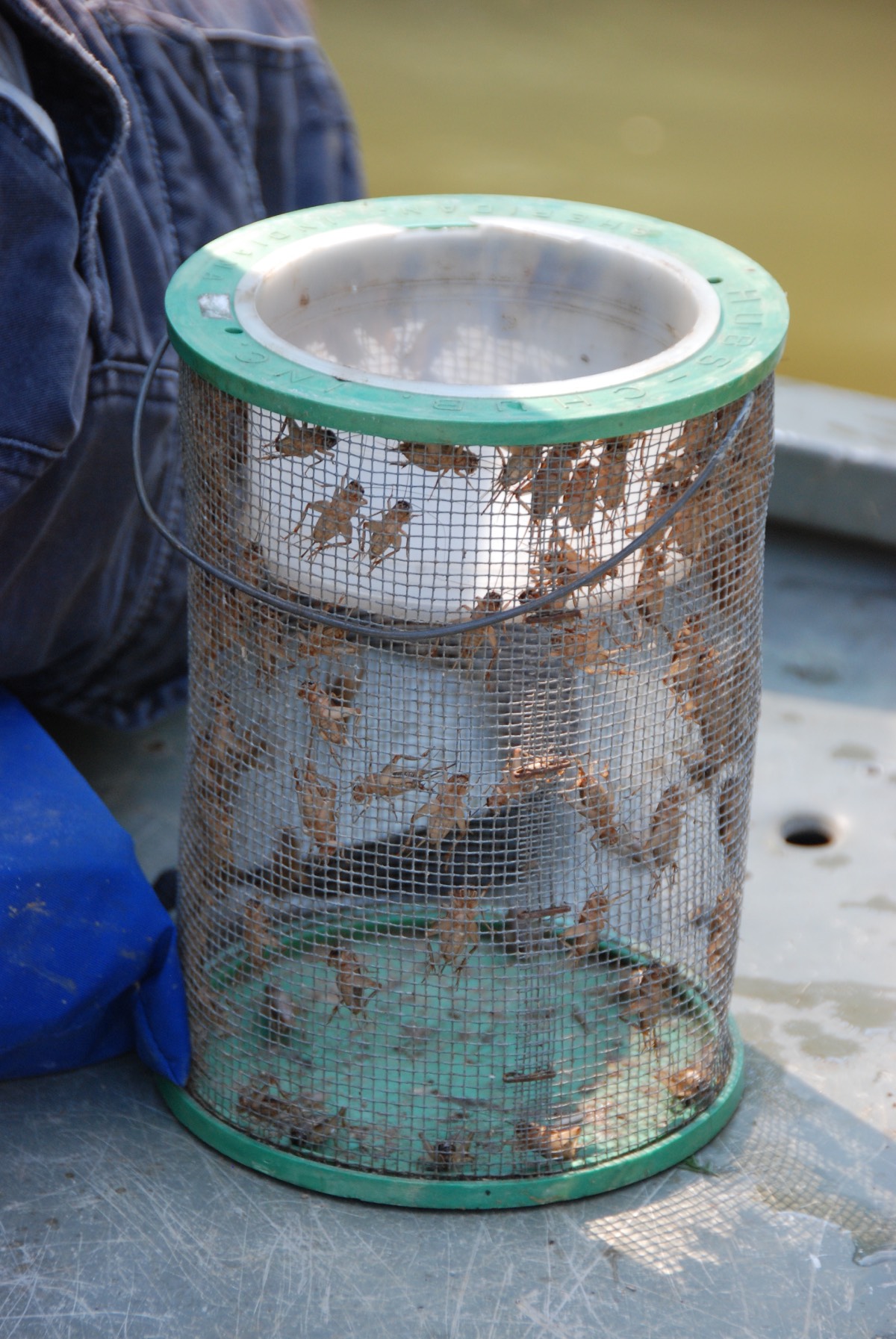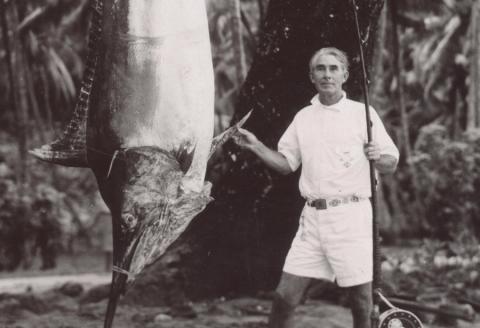
Phillip Gentry
For most of the year, bluegills live in relative obscurity in the minds of most anglers. Occasionally crappie fisherman may catch the odd ‘gill while working a brushpile for a limit of slabs or a bass angler may hook into a particularly feisty one when casting a smaller than average spinnerbait of crankbait toward the bank.
Through the summer, bluegills are typically thought of as a kid’s fish, readily available around a boat dock or farm pond, usually on the small side, but definitely a great way to entertain the kids on summer break.
During the months of May and June, however, bluegills become a legitimate target for a large contingent of anglers. The reason for the timing of the interest in this species is that spawning time is at hand and it’s quite possible to locate and catch good numbers of respectable fish.
Another feather in the cap is that bluegill are some of the tastiest freshwater fish to be found and the idea of catching a cooler full of better-than-hand sized ‘gills and loading up the fryer for a summer fish fry is hard to resist.
Fishing for bluegill, more colloquially called bream fishing in most parts of the country, can be divided into three categories, or strategies, if you will, and they all focus on locating the spawning locations of bluegills, also called bream beds.
How to Fish Bream Beds
Most anglers overcomplicate locating bream beds. In most areas of the country, start out on shallow flats in 4 – 5 feet of water, in deeper or mountain lakes, shallow may be 10 – 12 feet, but the idea is the same. The best areas will be surrounded by weeds, woody cover, or lily pads with a big sandy area on the bottom. Look closely and you may see the shallow depressions on the bottom where bream are bedding.
Additionally, some anglers get hung up on only targeting bream during specific phases of the moon, but by doing so, often miss some of the best bream fishing to be had. Many anglers believe the peak of the bream spawn is 3 days before the full moon and then again three days after, but since they spawn nearly all summer long, you can catch bream from the first of May through the summer.
The first bream fishing strategy is the standard bream fishing rig. A long, ultra-light, bream pole is rigged with a # 6 hook, split shot weight, and topped off with a toothpick cork. Impaled on the hook is a live cricket, the kind easily found at most bait shops.
No action or retrieve is needed, simply drop the rig into the bed and wait for the cork to go under or slew off to the side. When the action is hot, the cork may not sit on the surface for more than a second or two.
The second strategy combines electronics and an ultralight spinning or spin-cast combo. As some beds may be too deep to see unaided, look for small dimples on the bottom contour, a phenomenon that will look like the surface of a golf ball on side or down scanning sonar.
Staying well back from the area, or even returning to the area an hour or so later if you think you might have spooked the bed on the first pass, cast small artificial baits, especially anything with a spinner blade inline or attached just above or below the hook. Beetle spins, Rooster tails, Road Runners, Fin Spins or similar baits in the 1/32 to 1/16 oz sizes are good choices.
For live bait anglers, use a slip cork adjusted to roughly 18 inches above the bottom of the target area and slowly drag a redworm or cricket and a #4 or #6 gold Aberdeen hook. Bear in mind that bluegills typically feed up so present your offering above the fish.

Finally, there’s fly fishing. The trick to casting a fly rod is to remember that you’re casting the line, not the lure. Working the rod from the “10 and 2” position, draw the rod and floating line backward to the 2 o’clock position and then shoot the line forward by flicking the rod forward to the 10 o’clock position using your wrist and forearm. That’s the basic fly cast and becoming proficient is ample enough skill to catch bream.
A good panfish or trout sized rod is in the 3-5 line weight range. Rods don’t need to be overly long, a 7’ – 9’ rod will meet most bream fishing needs. The fly reel’s basic function is line storage so there’s little need to buy one with lots of bells and whistles. A basic fly reel that is of decent construction will service the bream angler for many years.
As with any lure, match the size of the bait to the size of the fish. Bream have small mouths and floating popping bugs and dry flies with smaller hooks in the size 10 range will hook more fish.
Regardless of the strategy you pick, bream fishing is addictive. In no time at all, the years melt away and the sight and sound of that bobber suddenly jerking out of sight or that bug going “smack” on the surface will return anyone to simpler times when a tug on the line was all that mattered.




























